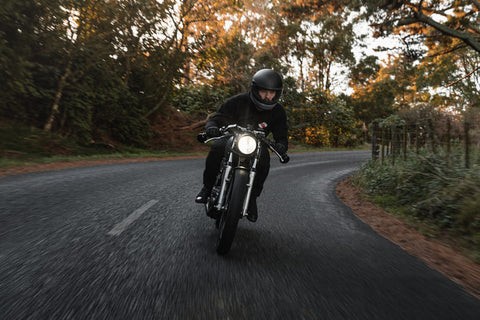Riding a motorcycle embodies a sense of freedom and adventure that captivates many. But the question remains: Can Anyone Learn To Ride A Motorcycle? The answer is a resounding yes! While it requires dedication and practice, with the right approach and guidance, almost anyone can master the art of riding. This comprehensive guide will walk you through the essential steps to becoming a confident and safe motorcyclist.
Choosing the Right Motorcycle for Beginners
The first step is selecting a motorcycle that suits your experience level. As a beginner, opt for a bike with a smaller engine displacement (under 600cc) and a manageable weight. Lighter bikes are easier to control and maneuver, allowing you to focus on fundamental skills without feeling overwhelmed. Prioritize comfort and ensure the bike fits your physique, allowing for a relaxed riding posture.
Essential Pre-Ride Checklist: Ensuring Safety
Before embarking on any ride, a thorough pre-ride inspection is crucial. This simple check can prevent potential hazards and ensure a safe journey. Inspect for fluid leaks, check tire pressure and chain tension, and ensure the brakes, throttle, and clutch are functioning correctly. Adjust your mirrors for optimal visibility before starting the engine.
Gear Up for Safety: Essential Motorcycle Apparel
Protecting yourself with proper riding gear is paramount. Motorcycle apparel is designed to shield you from impact and abrasion in case of an accident. Always wear a helmet, riding pants, gloves, boots, and a jacket. Look for gear that combines safety features with comfort and style. Modern motorcycle gear offers a wide range of options that cater to both protection and aesthetics.
Mastering the Brakes: Front and Rear
Motorcycles utilize both front and rear brakes, each playing a distinct role in stopping power. The front brake lever, located on the right handlebar, provides approximately 70% of braking force. The rear brake, controlled by a foot pedal, helps stabilize the bike during deceleration. Practice using both brakes smoothly and progressively to avoid sudden stops and maintain control.
Clutch and Throttle Control: Smooth Operation
The throttle controls engine speed, while the clutch lever, located on the left handlebar, engages and disengages the engine from the transmission. Mastering smooth clutch and throttle control is essential for seamless gear changes and maintaining a steady speed. Gentle and controlled movements are key to avoiding jerky starts and maintaining balance.
Gear Shifting: Mastering the Fundamentals
Motorcycles typically use a sequential gearbox, requiring riders to shift through gears one at a time. The gear lever, operated with the left foot, allows you to shift up or down. Familiarize yourself with the gear pattern and practice smooth shifting to avoid stalling or lurching.
Balancing and Turning: Body Positioning
Unlike cars, motorcycles require active body participation for balance and turning. Leaning into turns is crucial for maintaining stability and navigating curves effectively. Practice counter-steering, where you gently push on the handlebar in the direction you want to turn, to initiate lean. Develop a feel for the bike’s balance point and gradually increase lean angles as your confidence grows.
Practice Makes Perfect: Consistent Training
Proficiency in motorcycle riding comes with consistent practice. Start in a controlled environment, such as an empty parking lot, and gradually progress to more challenging roads as your skills develop. Focus on mastering fundamental skills, such as clutch control, braking, and turning, before venturing onto busy streets or highways.
Essential Considerations for New Riders
Before hitting the road, ensure you have the necessary legal requirements, including a motorcycle license, insurance, and registration. Avoid carrying passengers until you’ve gained sufficient experience and confidence. Stay away from highways initially and be mindful of weather conditions, as rain and other adverse weather can significantly impact riding conditions.
Learning from Qualified Instructors
While friends or family may offer guidance, professional motorcycle safety courses provide the most comprehensive and structured learning environment. These courses cover essential riding skills, safety procedures, and traffic laws. Learning from qualified instructors ensures you develop proper techniques and minimizes the risk of developing bad habits.
Safety First: Situational Awareness and Defensive Riding
Motorcycle riding demands constant vigilance and awareness of your surroundings. Practice defensive riding techniques, anticipating potential hazards and reacting accordingly. Maintain a safe following distance, be aware of blind spots, and always signal your intentions clearly.
Conclusion: Embracing the Ride
Learning to ride a motorcycle is an achievable goal for almost anyone. By following these guidelines, practicing consistently, and prioritizing safety, you can embark on a thrilling and rewarding journey. With dedication and patience, you’ll soon experience the unique joy and freedom that comes with mastering the art of motorcycle riding.

